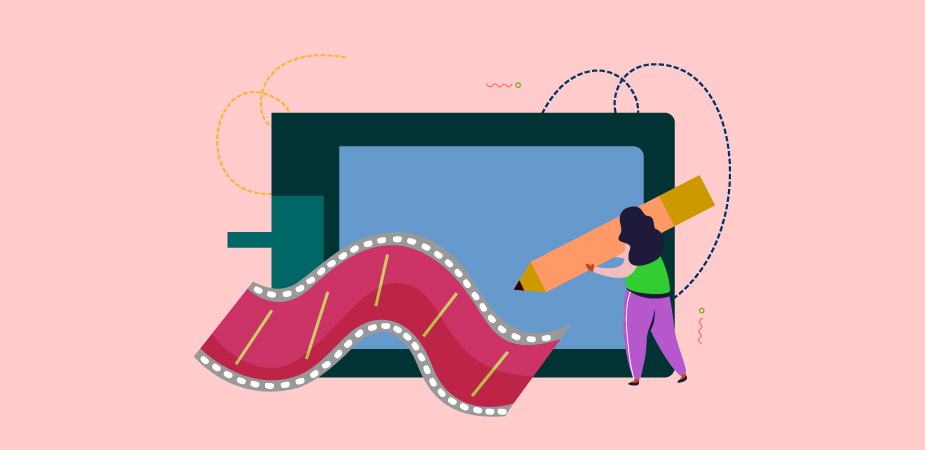Any producer or director’s biggest fear is to be told that they must “reduce the production expenses.” However, even with a smaller budget, you are expected to work with the greatest possible personnel.
Squeezing blood from a stone when trying to cut costs while yet offering excellent outcomes might be difficult further.
When it comes to animation production, there are a number of techniques to minimize expenses while simultaneously improving the overall process. In order to have the best of both worlds, you need to know what’s essential and what’s simply a “luxury.”
Today in this blog, we’ll explore what impacts the cost of animation production and how you can reduce it without compromising on the product quality.
So, without any further ado, let’s begin.
What Impacts Animation Production Costs?
There are a number of variables that have pushed animation expenditures to record highs. The more employees you hire, the more money you’ll have to spend. And the more experts you require, the more money you’ll have to spend.
Most of the time, it is the work of these professionals that drives up project costs. If they aren’t absolutely necessary, you should consider decreasing or perhaps eliminating them.
To have a better grasp on the factors that influence your animation budget, let’s look at the following parts of the animation and how much they cost to produce:
- Characters
- Animated characters
- Cel animation
- Video duration, number of scenes, and transitions
- Original music
Characters
Characters and Character Animation are now distinct categories, as you may have observed. Initially, this often appears to be an odd choice, but you’ll quickly discover why.
It is the viewer’s emotional connection with the character that makes a character compelling. There are, however, downsides, such as an increase in expenses and a rise in frustrations.
When it comes to character development, your team and client are likely to have the greatest back-and-forth dialogue. Everyone has an opinion about the characters since that is what we can most easily identify with.
As a result, the pre-production stage may be extended, and the budget may need to be increased because of the stringent requirements of stakeholders.
Look for ways to substitute characters with iconographies or possibly to remove them entirely in order to keep costs down.
If you remove the original characters from this scenario, it still works. There is no denying that the first one is more enticing and likable than the second, but the second is less ambiguous and saves a lot of time and money on character development.
If your situation is more complex than the one described here and you must make cuts to your spending, think about using a less literal approach. Rather than relying on a person to express your idea, try using shapes, text, and a variety of metaphors instead.
In addition to having a talented artist who specializes in character design, incorporating characters into the animation necessitates that they feel and move fluidly.
Animated Characters
When a character is animated, the cost goes through the roof.
Brands are damaged by poor character animation. We’re used to seeing other people walking, conversing, and moving about. We all detect when a character isn’t moving in a natural, “human” manner since this perspective comes so readily.
The uncanny valley is a term for this phenomenon, which says that humanoid things that are only vaguely like genuine human beings can elicit sensations of eeriness and repulsion in their audience members. Because no company wants to be connected with “eerie and revulsive sensations,” it is understandable.
Traditional motion graphics tend to be simpler than character animation. Animating a single figure often necessitates the use of many animated layers. And in order to do so, you’ll need a highly trained and specialized animator, who isn’t easy to come by or inexpensive to hire.
It’s possible, though, that character animation is necessary for your project, and there are a variety of ways to do this. There are several options for character animation while working with a limited budget, including simple After Effects work or more complicated frame-by-by-frame work.
Relevant Reading:
Cel Animation
Traditional animation has grown highly popular in recent years, and clients regularly request it. No longer confined to Saturday morning cartoons, it’s being employed as a strong method of expression because of its fluidity and the boundless ability for movement in the 2D animation world.
Most of the time, cel animations are integrated with motion graphics and other animation methods. But occasionally, full videos are generated with this approach.
You can’t overlook the possibilities it presents and how significant it is for animation; nonetheless, some agencies seek it merely because it looks great.
If it is not absolutely required and you’re on a limited budget, this is not the approach you should follow.
Unless it’s part of the video’s artistic direction and plan — and you have adequate funds for it — avoid adding cel animation to your videos. And if you’re not sure how to accomplish the aesthetic you want for your predetermined budget, call out to your favorite 2D animation company.
There’s always an imaginative option that a skilled creative team can recognize right from the storyboard.
Video transitions, number of scenes, and duration
Longer videos tend to be more expensive, which should come as no surprise to anyone. The greater the duration, the larger the crew or, the longer the production time needs.
If you want to cut down on production costs, you can do it by shortening your video’s length. It’s important to remember that the length of your video isn’t the only element that affects your budget.
The number of scenes (typically defined by the names of divisions in your storyboard) has an effect on your budget in addition to how long the project will take.
Animation needs the creation of a frame for each new scene in order to begin. Designers, directors, and animators all benefit from the extra time available when scenes are longer. Creating a single 1-second scene might be as time-consuming as creating a 5-second one for the same effect.
Keeping the number of scenes in the script to a minimum would help expedite production while also saving money. Avoid turning your animation into a pricey slideshow throughout this phase.
Additional transitions are required, and coming up with clever transitions isn’t always easy when there are more scenes. You’ll require a lot of directing and animation work if you have a lot of scenes and want smooth transitions between them. Keeping your cuts and transitions basic and conventional can help you save money.
Helpful Guide:
Original Music
Despite the importance of music and sound design, custom-made items are more expensive — as they should be.
An excellent technique to increase a message’s impact is through the use of original music. It allows the pictures to interact with the spectator in a more profound way.
If you don’t have the funds to pay for original music, you may still use stock audio in your campaigns. But if done correctly, it may be an excellent solution that saves tens of thousands of dollars.
Recommended Readings:
Tips and Tricks to Stick to Your Animation Budget
Keeping the scope and the number of characters in your video under control is critical. A commercial featuring only one or two characters in a small, contained space will be simpler to produce than one with numerous people in a vast, open location. Keep the fancy effects to a minimum as well.
The price of animation is sometimes determined by the number of frames it takes to render. So, a two-minute production will cost almost twice as much as a one-minute production.
Modeling and rigging consume a significant percentage of an animation’s budget. It is possible to save both time and money by using pre-made stock models rather than building everything from the ground up. You don’t need to spend a lot of money to locate good characters and use them to convey a compelling message.
Avoid overcomplicating the characters and the setting. The more detail and realism necessary, the more time it will take to complete.
Instead of animating the entirety of your advertisement, consider only a few key sections. Animation can simply be integrated with acquired video to help reduce costs. Animation can easily be integrated with obtained video to help reduce costs.
Don’t hold your breath waiting for something great to happen. Just remember, “good enough” is all you need. Revisions and adjustments are one of the biggest budget busters in animation. If the initial draft is good enough, don’t waste time and money on additional changes.
Look for a production firm with a low overhead like BuzzFlick that has the ability and expertise to get the job done quickly and successfully. Every step of the production process is covered by a team of professionals in a huge studio.
Great for those who can afford it. When you’re attempting to save money, you need personnel who can do more than one thing. If you’re looking to save money, they may not be as good as a specialist, but they’ll still be able to perform a wide range of duties.
Useful Reading:
Need a Quality Animated Video at an Affordable Price? – Hire BuzzFlick
Well, that might be an overwhelming task if you’re responsible for making the budget for your video animation project. In this case, we suggest you look for those video animation companies that are offering quality service at an affordable price.
Before handing over the project to any company, first discuss your project in detail. Ask them as many questions as possible and explain to them properly what you’re expecting to avoid revisions because they can be pretty costly.
Or, if you just don’t want to get into any hassle and don’t want to waste time, you can put your faith in BuzzFlick. As one of the best animation studios in New York City, we offer pre-eminent video animation and production services.
Be it a simple animated motion graphics video or educational video production, we do it all. Plus, we don’t go over the board. We always keep our budget in view and make suggestions accordingly, so you don’t have to worry about your animation budget.
The Key Takeaway – “Less is More”
Remember Ludwig Mies van der Rohe’s maxim, “less is more,” the next time you’re planning a project. It’s a common fallacy that adding more features improves the quality of a product or, in this example, animation.
The brand, the message, and the visual impact all need to be included in a tale for a brand in order for it to stick in people’s minds.
A cluttered screen makes it difficult for viewers to determine where their attention should be directed. Audiences will have a more difficult time connecting or comprehending your message if it is presented in a “noisy” setting.
Adding components only for the sake of aesthetic appeal will not help your campaign achieve its goals. Your client’s brand will not be promoted by developing an entertaining piece that doesn’t connect with the fundamental message, but you could get “aahs and oohs” when you display it.
The goal of “simplicity” does not necessitate reducing production. In most cases, this is the best option.
To put it another way, don’t simply make things easier – make them better. It may begin as a cost-cutting measure, but you may find that it ends up being a wise investment.




